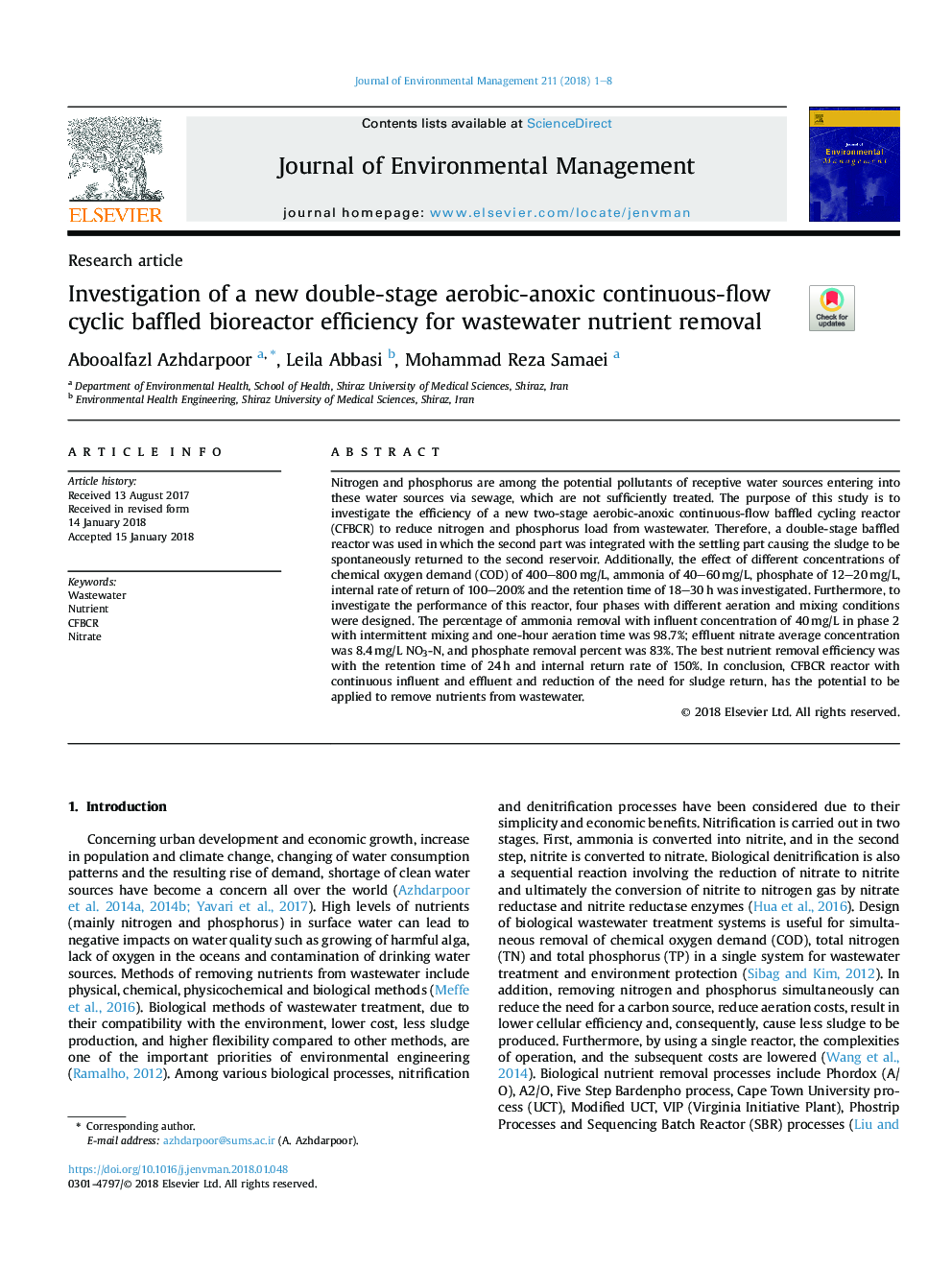| Article ID | Journal | Published Year | Pages | File Type |
|---|---|---|---|---|
| 7477897 | Journal of Environmental Management | 2018 | 8 Pages |
Abstract
Nitrogen and phosphorus are among the potential pollutants of receptive water sources entering into these water sources via sewage, which are not sufficiently treated. The purpose of this study is to investigate the efficiency of a new two-stage aerobic-anoxic continuous-flow baffled cycling reactor (CFBCR) to reduce nitrogen and phosphorus load from wastewater. Therefore, a double-stage baffled reactor was used in which the second part was integrated with the settling part causing the sludge to be spontaneously returned to the second reservoir. Additionally, the effect of different concentrations of chemical oxygen demand (COD) of 400-800â¯mg/L, ammonia of 40-60â¯mg/L, phosphate of 12-20â¯mg/L, internal rate of return of 100-200% and the retention time of 18-30â¯h was investigated. Furthermore, to investigate the performance of this reactor, four phases with different aeration and mixing conditions were designed. The percentage of ammonia removal with influent concentration of 40â¯mg/L in phase 2 with intermittent mixing and one-hour aeration time was 98.7%; effluent nitrate average concentration was 8.4â¯mg/L NO3-N, and phosphate removal percent was 83%. The best nutrient removal efficiency was with the retention time of 24â¯h and internal return rate of 150%. In conclusion, CFBCR reactor with continuous influent and effluent and reduction of the need for sludge return, has the potential to be applied to remove nutrients from wastewater.
Keywords
Related Topics
Physical Sciences and Engineering
Energy
Renewable Energy, Sustainability and the Environment
Authors
Abooalfazl Azhdarpoor, Leila Abbasi, Mohammad Reza Samaei,
